Responsible for what is largely considered to be the world's first published piano rag, Theodore H. Northrup represents yet another important and prolific contributor to the music of the ragtime era, yet very little has been known about him personally. Some additional information is here that has not been previously researched, many of which are assorted items of interest concerning his early life.
Theodore was born in early 1866 in San Francisco, California. His father, Charles C. Northrup, was hard to trace, as his place of birth is variously listed as New York, New Hampshire or Virginia (they may simply have not known his place of origin). However, his mother, Susan Elizabeth "Lizzie" Parker, was already somewhat of a celebrity in the Golden Gate city as a singer. She studied voice in her youth in Boston, Massachusetts under J.Q. Wetherby and the Italian teacher Benelari, then in New York from 1858 to 1861 under P.A. Revarde, before moving to San Francisco, California more than a decade after the gold rush had helped build the city. Elizabeth's sister Sophia was also a famous vocalist who traveled around the United States, working with no less than Dr. Lowell Mason and George James Webb. Her brother Amos was a noted baritone, and at one time the Mayor of Worcester, Massachusetts. Elizabeth then joined Biacnchi's Opera Troupe and toured through 1862, returning to New York in 1863 to appear with Strakosch at the original Winter Gardens. In 1865 she returned to San Francisco for good, engaged with a couple of the larger synagogues and churches. So there was a substantial musical legacy in place in the family when Theodore appeared.
Between the time Theodore's brother Edward Everet Northrup was born May 30, 1866, and late 1869, Elizabeth was divorced from Charles. She soon remarried to leather clerk Henry Burr Howell, and despite her constant singing engagements was listed as keeping house in the 1870 enumeration, not an atypical listing for that period. Theodore and Edward were listed under the Howell name, but there was also a Charlotte Northrup, age 17, living in the home, but the actual relationship is unclear. Theodore and Edward soon had a half sister, Grace Howell in 1871, and a half brother, Ralph Burr Howell in 1873. In the 1880 enumeration, Elizabeth appeared as a music teacher and once again showed as divorced. It was reported that she had suffered throat damage from a severe cold,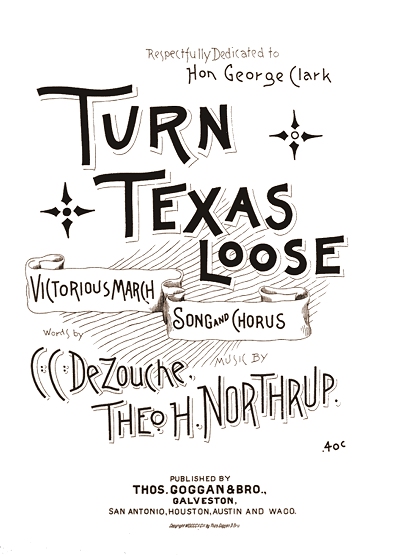 and slowly gave up her singing activities in favor of teaching, also to support her family. Grace eventually went on to be a professional singer for a time as well. Theodore, however, started out on a different track.
and slowly gave up her singing activities in favor of teaching, also to support her family. Grace eventually went on to be a professional singer for a time as well. Theodore, however, started out on a different track.
 and slowly gave up her singing activities in favor of teaching, also to support her family. Grace eventually went on to be a professional singer for a time as well. Theodore, however, started out on a different track.
and slowly gave up her singing activities in favor of teaching, also to support her family. Grace eventually went on to be a professional singer for a time as well. Theodore, however, started out on a different track.After his education, which should be implied would have include a liberal dose of music theory and harmony, Theodore tried his hand at arranging music, and even a couple of attempts at writing an opera or two, which were reportedly staged somewhere in San Francisco. He also had a couple of waltzes and parlor pieces published in the late 1880s. However, Northrup was also practical, working as a collector, likely financial, although his capacity in this job was unclear. He is shown working for the M. Friedman Furniture and Carpet Company in 1889, then for publisher J. Dewing and Company in 1890, the latter firm which built their substantial reputation on the 1888 book Picturesque California. Yet during this time he pursued writing in a different direction from his mother's history. His first published popular song was Two Happy Coons published by Pacific Music Company in San Francisco with the name Theodore Havermeyer on the cover, but Theodore H. Northrup inside. Whether Havermeyer was his middle name is unclear, since the 1880 census cites his middle initial as P, but this is assumed to have been an error or a temporary use of the name Parker. Two Happy Coons was followed by a more poetic parlor piece, a variety of which he would compose often through the 1890s. Records show that he had married to Beppie Lee (1866) on February 17, 1888, although she was not seen in any of his demographics over the subsequent two decades, so, little is known about her.
Given the success of his first popular publications compared to his operas, which today cannot readily be found, Northrup decided to pursue music as a profession. He submitted several popular instrumentals and songs in 1892, largely to National Music Company, which were also soon distributed in England as well. It appears he may have spent several months somewhere in Missouri, potentially Kansas City, then down to Galveston, Texas in late 1892, where he is mentioned in an article in April 1893.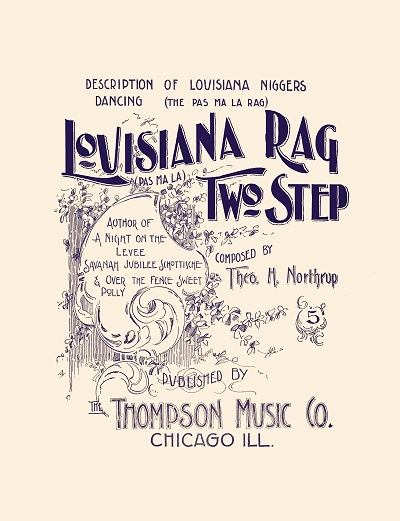 According to the article, the California World's Fair commission had asked him for a biographical sketch, photograph, and a couple of his compositions for insertion in one of their books on composers of the Pacific Coast, so he was already enjoying some level of notoriety. Northrup also appeared in an 1893 directory in Galveston as a salesman for Thomas Goggan & Brother, a keyboard instrument manufacturer. They published the unusual Turn Texas Loose by Northrup in late 1892. By the end of 1893 Northrup had established himself in Chicago where he would remain for a few years. He free-lanced as an editor and arranger for National and other firms as well as a composer. One of his larger projects was The Golden Treasury Of Music From The World's Famous Composers, a substantial volume released in 1895. Northrup also worked with assorted lyricists, including Arthur J. Lamb who would soon become famous for many of his contributions. His output both alone and with others was varied from "coon" patrols to sentimental pieces to semi-classical arrangements of other works, such as the Mexican dance La Golondrina (The Swallow).
According to the article, the California World's Fair commission had asked him for a biographical sketch, photograph, and a couple of his compositions for insertion in one of their books on composers of the Pacific Coast, so he was already enjoying some level of notoriety. Northrup also appeared in an 1893 directory in Galveston as a salesman for Thomas Goggan & Brother, a keyboard instrument manufacturer. They published the unusual Turn Texas Loose by Northrup in late 1892. By the end of 1893 Northrup had established himself in Chicago where he would remain for a few years. He free-lanced as an editor and arranger for National and other firms as well as a composer. One of his larger projects was The Golden Treasury Of Music From The World's Famous Composers, a substantial volume released in 1895. Northrup also worked with assorted lyricists, including Arthur J. Lamb who would soon become famous for many of his contributions. His output both alone and with others was varied from "coon" patrols to sentimental pieces to semi-classical arrangements of other works, such as the Mexican dance La Golondrina (The Swallow).
 According to the article, the California World's Fair commission had asked him for a biographical sketch, photograph, and a couple of his compositions for insertion in one of their books on composers of the Pacific Coast, so he was already enjoying some level of notoriety. Northrup also appeared in an 1893 directory in Galveston as a salesman for Thomas Goggan & Brother, a keyboard instrument manufacturer. They published the unusual Turn Texas Loose by Northrup in late 1892. By the end of 1893 Northrup had established himself in Chicago where he would remain for a few years. He free-lanced as an editor and arranger for National and other firms as well as a composer. One of his larger projects was The Golden Treasury Of Music From The World's Famous Composers, a substantial volume released in 1895. Northrup also worked with assorted lyricists, including Arthur J. Lamb who would soon become famous for many of his contributions. His output both alone and with others was varied from "coon" patrols to sentimental pieces to semi-classical arrangements of other works, such as the Mexican dance La Golondrina (The Swallow).
According to the article, the California World's Fair commission had asked him for a biographical sketch, photograph, and a couple of his compositions for insertion in one of their books on composers of the Pacific Coast, so he was already enjoying some level of notoriety. Northrup also appeared in an 1893 directory in Galveston as a salesman for Thomas Goggan & Brother, a keyboard instrument manufacturer. They published the unusual Turn Texas Loose by Northrup in late 1892. By the end of 1893 Northrup had established himself in Chicago where he would remain for a few years. He free-lanced as an editor and arranger for National and other firms as well as a composer. One of his larger projects was The Golden Treasury Of Music From The World's Famous Composers, a substantial volume released in 1895. Northrup also worked with assorted lyricists, including Arthur J. Lamb who would soon become famous for many of his contributions. His output both alone and with others was varied from "coon" patrols to sentimental pieces to semi-classical arrangements of other works, such as the Mexican dance La Golondrina (The Swallow).Then in 1897, Northrup released a series of pieces in the early ragtime vein, including A Night on the Levee, Savannah Jubilee, and Louisiana Rag. The latter, based in part on the negro Pas Ma La dance, is considered to be the first authentic piano rag published with "rag" in the title, predating William Krell's Mississippi Rag, which is actually a cakewalk. One of the notable parts of this rag include the use of cocoanut halves clicked together at the end of each iteration of the A section. An advertisment by Thompson Music of Chicago in November exclaims that it was "composed by Theo H. Northrup, the greatest living ragtime pianist. This piece has made an instantaneous hit and has become a great favorite everywhere."
These pieces garnered attention and sales, and Northrup soon moved to New York City. One of his important contributions early on was as the editor/arranger of Ben Harney's Ragtime Instructor, one of the first books available on how to play in a ragtime style.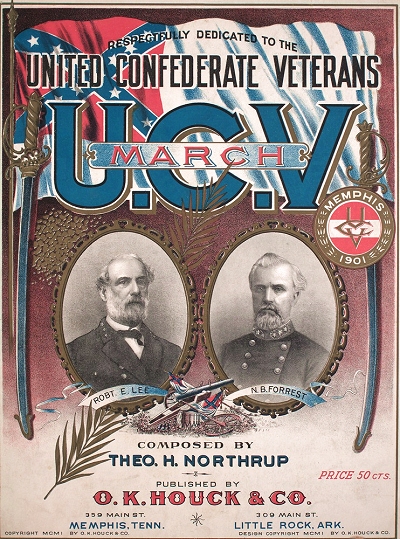 There was some irony that the white braggart stage entertainer who was the so-called "inventor of ragtime" and a white musician from California should be responsible for this, but in the long run it helped make the music more acceptable to white musicians and the public, therefore better promoting black rags when they started showing up in print.
There was some irony that the white braggart stage entertainer who was the so-called "inventor of ragtime" and a white musician from California should be responsible for this, but in the long run it helped make the music more acceptable to white musicians and the public, therefore better promoting black rags when they started showing up in print.
 There was some irony that the white braggart stage entertainer who was the so-called "inventor of ragtime" and a white musician from California should be responsible for this, but in the long run it helped make the music more acceptable to white musicians and the public, therefore better promoting black rags when they started showing up in print.
There was some irony that the white braggart stage entertainer who was the so-called "inventor of ragtime" and a white musician from California should be responsible for this, but in the long run it helped make the music more acceptable to white musicians and the public, therefore better promoting black rags when they started showing up in print.By 1900 Northrup was in demand by publishers and musicians, with one of his most fortuitous connections being another "inventor of ragtime," performer Ernest Hogan, who actually did a lot to promote ragtime and had a more legitimate claim to it given that he was black. It was also appropriate because he had composed one of the first major songs based on the Pas Ma La much as Louisiana Rag had been, All Coons Look Alike to Me. In 1900 and 1901 they became one of the premiere black and white pairings in print, with many of Northrup's melodies featured in Hogan's stage shows. While in the short run it benefited both composers, Hogan later made it clear he regretted the use of the term "coon" in any of his pieces since it dishonored his race and caused him much scorn.
Northrup was soon called on to provide some background music for a musical comedy titled Madge Smith, Attorney, starring the bodacious singer May Irwin. With tunes of many other composers interpolated, it is difficult to isolate his particular contributions. His compositions sold well on both sides of the Atlantic. Northrup's status as a performer is hard to track down, but it would be expected that he participated in public performance from time to time, likely preferring to stick to writing as information on public appearances is difficult to locate. In 1903 he and lyricist Thornton Cole wrote a stage show called The Giddy Goat which saw little action and did not make it to Broadway.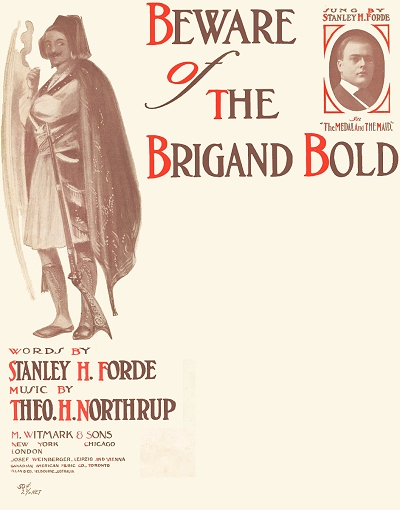

In late 1904 Northrup contributed some pieces to the musical Buster Brown starring Bobby North, lyrics by George Totten Smith, which closed after a respectable 95 performances in 1905. According to The Music Trade Review of February 6, 1904:
Theodore Northrup, who is responsible for the major part of the score of 'Buster Brown,' the new cartoon play success, is a versatile and popular writer on the staff of M. Witmark & Sons. This year has been a marked one for him because of the number of successes he has made, successes of a striking and noticeable sort, prominent among which are the two baritone songs, 'Here's to Nut Brown Ale,' and 'Beware of the Brigand Bold,' written with Stanley Forde and sung by that well-known singer in '"The Princess of Kensington' and 'The Medal and the Maid' respectively, where they both scored big hits. Other numbers of Mr. Northrup's, which are being played and sung everywhere, are 'Pretty Poll,' 'A Yeoman of the Guard,' 'The King of Coney Isle,' 'Polly Pry,' 'My Dinah Lee' [sic], 'The Poppy and the Golden Rod,' and 'In a Tea Garden.' This prolific composer has now in preparation for production four new comedies, 'The Moon Child,' 'Hawaii,' 'Captain Angel' and 'The Giddy Goat' [already released], 'Hawaii' is scheduled for production early in the spring and the others will be seen during the first of next season.
Among the 1904 musicals mentioned in the article was Hawaii, a Nautical Comedy in two acts, composed with Thornton Cole. He also contributed a piece co-written with Irish ballad king Chauncey Olcott to the show Edmund Burke late in 1905, which closed after a mere 28 performances. The disposition of Moon Child and Captain Angel, based on a 1903 novel about a rogue pirate, is unclear, but they did not make it to Broadway proper.
The Music Trade Review printed another short portrait along with a photographic one of composer Northrup in their May 13, 1905 edition, excerpted here:
The portrait above is that of Theodore H. Northrup, the well-known composer, who is identified with what is known as Branch B of the Witmark Music Library, one of the most important departments of that famous publishing house. It will be most gratifying news to music lovers generally to learn that Mr. Northrup has composed a new bass solo, which is entirely different from anything he has heretofore written, being robust and simple in style and suitable also for baritone singers. The name of this new song has not, as yet, been given to the public... Music lovers and musicians will also be glad to be informed that the famous nautical opera, 'Ship Ahoy' [H. Grattan Donnelly and Frederick Miller - 1890], has been revised and brought up to date by Mr. Northrup, to be in readiness for the road next season. He has added almost an entire new vocal score to the opera, and has strengthened it in many other respects.
Later in the decade Theodore's focus would shift more to arrangements, many uncredited, and away from the type of pieces that had made him famous. He even did some instructional material and reportedly taught on occasion, though this is unconfirmed. Northrup did contribute three pieces to one more Broadway musical in 1909. Harry Girard and Joseph Blethen had staged The Alaskan in 1907, but it did not fare well on its first run. So Girard engaged Northrup and a couple of others to compose some new material for the play in 1909, but in the end it did no better on the second run. Theodore moved in 1908 or 1909 to Denver, Colorado. There is mention of him there in 1909 as part of a patent listing with one David Spier Whitaker, for an item called a "work holder,"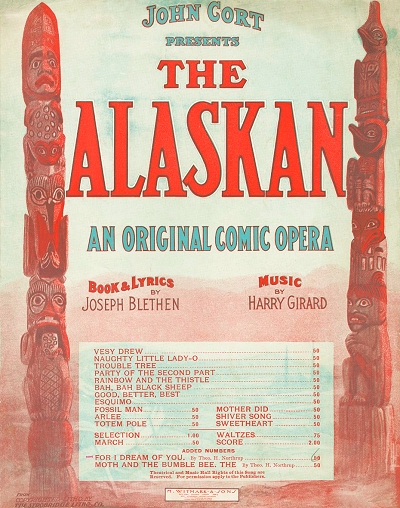 designed to improve the process of whipstitching napkins, table cloths and similar items. Northrup may have simply been a 50% investor in this enterprise, which was granted a patent in September 1910.
designed to improve the process of whipstitching napkins, table cloths and similar items. Northrup may have simply been a 50% investor in this enterprise, which was granted a patent in September 1910.
 designed to improve the process of whipstitching napkins, table cloths and similar items. Northrup may have simply been a 50% investor in this enterprise, which was granted a patent in September 1910.
designed to improve the process of whipstitching napkins, table cloths and similar items. Northrup may have simply been a 50% investor in this enterprise, which was granted a patent in September 1910.In the 1910 Federal census Northrup is listed as a composer, and lodging with a British immigrant named Alice Hunter, a drawing teacher. Nothing else of the nature of their relationship is known, but she is shown as single and Northrup as having been married for some time. It is likely he was separated from his wife Beppie at this juncture, a point confirmed by their final divorce on January 7, 1911. In 1913 Northrup copyrighted a "musical dancing vaudeville act" titled The Rag, written with Leo A. Bahner. Another musical the pair copyrighted was titled A Colorado Match. No further description of the contents has been located. Very little output came from Northrup after this time, his penultimate song representing a multi-generational collaboration with newcomer Gus Kahn, who would become a lyrics powerhouse in the 1920s and 1930s. Northrup was married in Denver to Jennie M. Barr on October 6, 1913.
One other mention of him in Denver is made in The Music Trade Review of October 9, 1915: "Theodore H. Northrup, the well-known composer, has contracted with Les Wallace, the staff lyric writer of the Denver Post, and these two will issue 'semi-popular classics.' It is a matter of considerable promise when two such talented writers join forces." This possibly refers to the remainder of Northrup's pieces of 1914 and 1915, although Wallace's name does not appear on them. One final piece related to the potential involvement of the United States in the war in Europe came in 1916. God Guide Our President was featured by the national PTA magazine.
While for the most part we lose track of Theodore Northrup after 1915, there is a probability that he was a late victim of the Spanish Influenza pandemic of 1918 and 1919, which was in its third wave in the west by mid-1919. There is a confirmation of his death in August of 1919 in Pueblo, Colorado, at age 54 in a local hospital. There is further a mention of his body being sent to Denver for final arrangements, but as he was unclaimed he ended up being buried in Pueblo in Roselawn Cemetery. Unusually enough, in the probate records for the estate there is a mention of Beppie as a potential recipient of his life insurance. Why it was not Jennie is unclear, as neither an identification nor an apparent payout was made. Since there were no other Theodore Northrups very close to his known age listed in previous census records, it becomes evident that this is the composer.
Northrup's half-brother, Ralph Howell, became a prominent member of the Lutheran Church by the 1910s, and was active in building the National Guard in California. Ralph was also a musician, though not a composer, and living in San Francisco through at least 1920. With his wife Marie Katherine Norden they had one daughter, perhaps the only indirect descendant of Theodore. Edward Northrup appears in both the 1910 and 1920 census, still in San Francisco with his mother, and working as a building contractor. He remained single with no family, so any other offspring of the Northrups are hard to trace. Even though he was briefly married, Theodore was not known to have had any children, except for the legacy of tunes he gave birth to during his lifetime.
Information on Northrup's early operas and his mother's career comes from her biography in The Bay of San Francisco, Volume 2, pages 458-459, Lewis Publishing Co, 1892. Thanks go to ragtime researcher Reginald Pitts who found the sighting of Northrup in Pueblo, bringing some sense of completion to Northrup's life story. The remaining information was assembled from various public records and historical printed sources.
 Compositions
Compositions